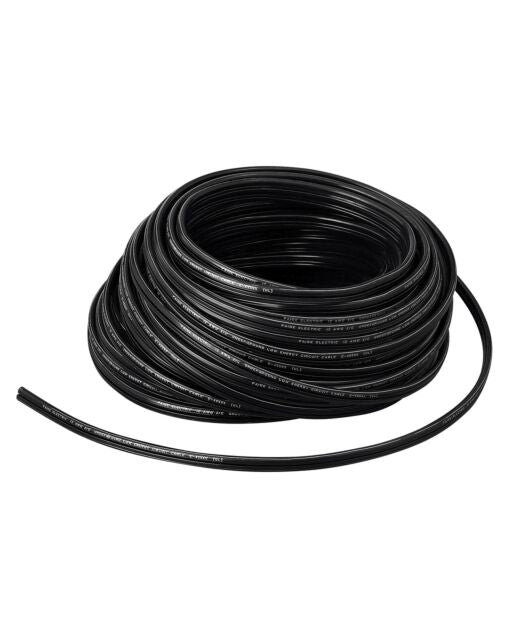Wire 12-AWG
Wire 12-AWG
Landscape Wire by Hinkley Lighting
Couldn't load pickup availability
Payment methods
Your payment details are transmitted securely during checkout. Card numbers aren’t stored, and full card information isn’t accessible.
Shipping
Shipping
Free shipping on orders $99+ within the contiguous U.S. (excludes Alaska & Hawaii). Orders under $99 ship via flat-rate ground for $14.99. Review our full Shipping Policy here.
Returns
Returns
Most unused items in original packaging may be returned within 30 days of delivery for a refund. Items labeled “Final Sale,” “Open Box,” or “Clearance” are not returnable. Shipping charges are non-refundable and a restocking fee applies. Review our full Return Policy here.
Share

Specifications
| Brand: | Hinkley Lighting |
| Part Number: | 0250FT |
| UPC: | 640665025019 |
| Category: | Landscape Wire |
| Dimensions: | 250'L |
| Weight: | 15 Lbs. |
| Finish: | Black |
Landscape Wire FAQs
Which wire gauge should I use for low‑voltage landscape lighting?
Common choices are 12, 14, and 16 AWG copper. Use heavier gauges for higher loads and longer distances to keep voltage near 12 V at fixtures.
How do I calculate or manage voltage drop on long runs?
Keep runs short, upsize wire, and use multi‑tap transformers. Target ~11.5–12.5 V at fixtures under load; measure and adjust taps as needed.
Is copper or aluminum wire better outdoors?
Copper offers stable, low‑resistance connections and is standard for landscape systems. Aluminum is less common and needs special lugs.
Do I need direct‑burial rated cable and how deep should I bury it?
Yes—use direct‑burial rated cable and follow local code for burial depth (often 6 in. minimum for low‑voltage). Mark routes on an as‑built plan.
How do I route wire under sidewalks, drives, or hardscape?
Push a conduit sleeve under hardscape with a boring tool or water jet, then pull cable through. Seal ends and use pull strings for future adds.
Can I run landscape wire in the same trench as irrigation?
Maintain separation where code requires. Avoid sharing trenches with sharp rocks or sprinkler lines without protection.
How do I splice wire reliably in wet locations?
Use UL‑listed gel‑filled connectors, heat‑shrink butt splices, or junction boxes. Keep splices out of standing water where possible.
How many fixtures can I put on one run from the transformer?
Sum fixture wattage per run and keep within transformer and wire capacity, leaving 20–30% headroom for future changes.
Should I use a hub, loop, or T‑tap wiring method?
Hub wiring evens voltage at a central point; T‑taps are efficient for branches; loops are less common with LEDs. Choose based on layout and drop.
What maintenance prevents wire faults over time?
Inspect for cuts, rodent damage, and loose splices; re‑terminate corroded copper; and verify voltage at the far ends seasonally.

